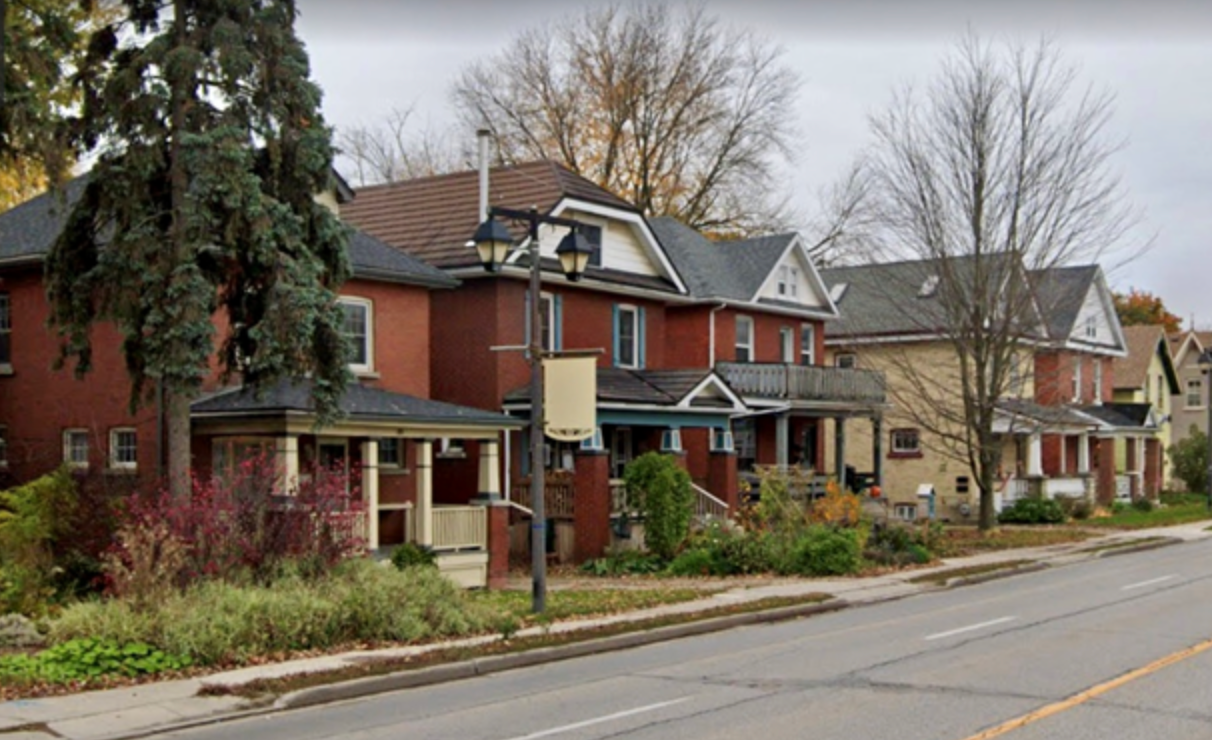
We are coming late to grasping the grave threat that climate change poses to our economy, our society and our safety.
COP26, the 2021 United Nations Climate Change Conference that wrapped up earlier this month in Glasgow, Scotland, tested humanity’s will to tackle the existential crisis of our time. In the Glasgow Climate Pact all countries agreed to “keep 1.5 alive” and finalize the outstanding elements of the 2015 Paris Agreement.
COP26 President Alok Sharma:
We can now say with credibility that we have kept 1.5 degrees alive. But, its pulse is weak and it will only survive if we keep our promises and translate commitments into rapid action. …
From here, we must now move forward together and deliver on the expectations set out in the Glasgow Climate Pact, and close the vast gap which remains. …
It is up to all of us to sustain our lodestar of keeping 1.5 degrees within reach.… After the collective dedication which has delivered the Glasgow Climate Pact, our work here cannot be wasted.1
There is broad agreement that the 1.5C goal means the world needs to get to net zero carbon emissions — the balance between the amount of greenhouse gas produced and the amount removed from the atmosphere — by 2050. Just over 28 years away!
Only “rapid action” will avert global catastrophe. Everyone will need to do their part. Individuals, businesses and organizations, communities and governments at all levels.
And we will need new tools and approaches. Bill Gates:
… [A]ccomplishing [the 2050 net zero goal] will require a green Industrial Revolution in which we decarbonize virtually the entire physical economy: how we make things, generate electricity, move around, grow food, and cool and heat buildings. The world already has some of the tools we’ll need to do that, but we need a huge number of new inventions too.2
In Ontario a major chunk of this “physical economy” is how we treat our communities’ hundreds of thousands of existing buildings and structures.3 Not just how we heat and cool them, but how — and whether — we use/reuse, operate, maintain and renovate them over time.
Keep them up, fix them up and keep them going. Or, tear them down and send them to landfill, and replace them with new construction.
In climate impact terms, what is the argument for the former and against the latter?
But first: While it can be marshalled to help save our built heritage, we should understand that this is not really a heritage argument. The argument isn’t so much about the cultural heritage value of buildings, as the weight our culture puts on the ecological value of our building stock. It isn’t so much about protecting the past, as conserving the resources our older buildings represent and using them to help find solutions (Gates’s “tools” and “inventions”) for the future.
The argument confronts us with the climate change consequences — in the form of carbon/greenhouse gas (GHG) emissions — of destroying buildings. I think it runs something like this:
- Destroying sound buildings to make way for new builds wastes resources (the materials and embodied energy in a structure, which stays locked up if destruction is avoided)
-
Demolition activity itself, including transporting the waste, takes energy and adds to carbon emission
-
Most new construction is heavily concrete and steel reliant; the production of cement, the key ingredient in concrete, is one of the largest contributors of GHG emissions in the built environment
-
Compared to new construction, building retrofit and reuse reduces climate change and environmental impacts by 4 to 46%, depending on type, location and assumed level of energy efficiency4
-
The emissions created by demolition of existing structures on a site and their replacement with new construction cannot be off-set, no matter how energy-efficient the new structure might be.5 The greenest building is the one that already exists.
The argument concludes:
Keeping, retrofitting (especially to increase energy efficiency) and reusing Ontario’s buildings — and integrating them into redevelopment — is better for the planet than demolition and building new.6 Retaining and enhancing our existing building stock reduces carbon emissions and helps Ontario/Canada meet our climate change targets.
Questions for you: Is this the argument? How do we make it clearer, stronger, more compelling?***

If the case for keeping versus replacing is convincing, how do we bring about a shift in our approach to existing buildings?
What public policy changes are needed to mandate, or incentivize, or encourage the retention, use, upgrading and maintaining of our older building stock? By the public sector? By the private sector?
What should municipalities be doing? What should the Ontario government be doing?
Here’s an exercise to bring these questions into focus. It’s a scenario that, in one form or another, seems to play out weekly in our towns and cities.

A developer comes forward with a proposal for new development, for multi-residential housing let’s say. The site is in a built-up, older area of town. The proposal would see a couple of existing houses demolished and replaced with a large four-storey structure.
The existing two and two-and-a-half storey buildings date from the late nineteenth century and may have seen better days, but are structurally sound. They are not designated or listed under the Ontario Heritage Act and do not appear particularly special, but they do form part of a settled neighbourhood and contribute to its character.
Let’s also say the developer requires Official Plan and zoning bylaw amendments for the proposal. The developer cites the great need for housing, makes the usual arguments for intensification and touts other benefits. The neighbours and others are opposed and make the usual arguments that the redevelopment is too large and out-of-scale and would negatively affect the street’s character (and of course that the existing OP and zoning don’t permit it).
Some of those opposed to the project call for an alternative approach: one where the existing buildings are integrated into a different kind of development that would provide the same density but be lower in height, more sympathetic to the neighbourhood character and not require planning changes.
The developer makes some minor changes to the proposed design of the new building and presses ahead. In coming to a decision on the project, the town tries to “balance” all the public and private interests at stake.
What happens? It could go either way but, from experience, odds are good the project gets approved. The existing buildings are destroyed and all-new construction takes their place.
What is missing from this scenario of course is any real consideration of environmental and climate change impacts.
Had the argument discussed above for keeping, fixing and reusing existing buildings been invoked, would the outcome have been different? Possibly, but not likely. This is because municipalities — councils and their professional planning staff — don’t have to seriously weigh climate change impacts in their land use planning calculations and decisions. Nor does the Ontario Land Tribunal, which hears appeals from these decisions.
We’re out of time, but think about what policy or legislation tools could help change the equation here. Tools that would bring municipal leaders to step up and employ a tough carbon-impact lens in making planning and development decisions. Put another way, tools that would hold them to account for the climate change repercussions of their decisions.
Questions for you: How do we create a climate-based shift in our approach to older buildings? Which tools do we use? What about the Provincial Policy Statement7, Ontario Building Code8, or new legislation9? And how about incentives10? Other ideas? ***

***Hey people, I don’t usually plead for your comments and ideas. Please, share comments, ideas, statistics, examples and sources via the “Comment” box below, or send to me at danschneider@live.ca.
Notes
Note 1: His remarks at the COP26 closing plenary are here.
Note 2: See “In Glasgow, I saw three big shifts in the climate conversation”.
Note 3: According to a UN report, buildings contribute to well over one third of global energy use and associated greenhouse gas emissions.
Note 4: Source: U.S. National Trust for Historic Preservation
Note 5: Source: “Heritage responds — Taking positive action on climate change”, p. 7. But no technical study or report is cited.
Note 6: And this does not take into account the landfill impacts. The Ministry of the Environment estimates that Ontario will run out of landfill space in 11-14 years.
Note 7: The 2020 PPS has much more to say about preparing for the impacts of climate change than about reducing carbon emissions. Policy 1.8.1 includes a general statement that planning authorities “shall support … reduced greenhouse gas emissions, and preparing for the impact of a changing climate.”
Note 8: The Building Code Act sets the legislative framework governing the construction, renovation and change-of-use of Ontario buildings; the Ontario Building Code, a regulation under the Act, establishes detailed technical and administrative requirements and minimum standards for building construction and demolition. Readers may recall Catherine Nasmith’s recent OHA+M article on “Demolition: Fix the Building Code not the Heritage System!”
Note 9: See, for example, Alex Robinson’s interesting idea for The Re-Amortization Act here.
Note 10: See: https://www.theenergymix.com/2021/10/03/u-k-engineers-urge-incentives-to-stop-knocking-down-old-buildings/